- Register
- Log in to Tune-In
- Wishlist (0)
-
Shopping cart
(0)
You have no items in your shopping cart.
Beatles News

Sir Ringo Starr has been married to Barbara Bach for some time, but they have no children together. Sir Ringo already had three children with his first wife, Maureen, and met Barbara some time after their divorce. So how did Barbara meet Sir Ringo, and where were they?
Sir Ringo Starr met Barbara Bach, his future wife, on the set of the film Caveman in 1980.
The film starred Sir Ringo and Barbara, alongside Dennis Quaid and Shelley Long.
Caveman was not received well by critics, with Roger Ebert saying: “It has a basic problem, which is that there is no popular original material for it to satirize.”
Ringo and Barbara married at Marylebone Town Hall on April 27, 1981, and have been together ever since.
Source: Jenny Desborough/express.co.uk
details
Klaus Voormann remembers taking the stage with John Lennon and Yoko Ono's conceptual Plastic Ono Band for their first gig at the Toronto Rock 'n' Roll Revival festival in September 1969. When Ono, wrapped in a bed sheet, let out one of her signature, guttural wails, the once-enthusiastic crowd was confounded.
"Standing on stage, you could see the way the people react, whispering to each other. Not disinterested but just, 'Christ, what's happening up there?'" the 82-year-old recalls.
"[Ono] was wanting the people to know there were people dying [in Vietnam]. She had us imagine tanks are coming, bombs are coming, dead people on the road. When you're standing behind her, you realise what she's trying to do. But it was too strong for the crowd. They came to see John Lennon the ex-Beatle, you know? They didn't want to think about death and war.
Source: Robert Moran/smh.com.au
details
Few people will ever know what it’s like to have a sibling forever remembered and discussed the world over, but that is the reality for Julia Baird, who has now lived the greater portion of her life deprived of John’s physical presence, yet surrounded by his imperishable legacy.
At the end of the 1970s, the inimitable icon John Winston Ono Lennon, who would have turned 80 last month, was longing for his family and reflecting on boyhood summers spent in Scotland.
Had his life not been cut tragically short in New York City 40 years ago this December, the former Beatle would have returned. An audio recording, made shortly before his death, confirms his intention to take second son Sean to Edinburgh in 1981.
For John’s eldest sister, Julia, the knowledge that her big brother, who she hadn’t seen in over a decade, had been planning to come home was excruciating.
Source: scotsman.com
details
Michael Jackson worked with Sir Paul McCartney many times in his early career, even performing a duet. He also did an iconic radio interview with George Harrison, showing how these two were also very close. MJ was such a fan of The Beatles he even purchased a huge amount of the Lennon-McCartney back catalogue - but does he still own them?
Does Michael Jackson still own the rights to songs by The Beatles?
Michael Jackson purchased the publishing copyrights to songs written by Lennon-McCartney and some early songs by George Harrison.
This was something which, according to one biography of the Thriller singer, Michael had joked about with Sir Paul McCartney at dinner.
However, things became real when the catalogue of songs from ATV Music became available to purchase, and both Sir Paul and Yoko Ono, John Lennon’s widow, decided against purchasing them.
Source: Jenny Desborough/express.co.uk
details
"They ARE awful. But I also think they're fabulous. Let's just go and say hello."
What if young record store manager Brian Epstein had not, in 1961, after a scrappy gig in a "sweaty basement," popped over to say hello to the band? What if, as Craig Brown wonders in "150 Glimpses of the Beatles," Paul had done better in his exams, moved up a school year and never gotten to know George? Or Ringo had had more patience with U.S. immigration forms and succeeded in moving to Houston? Or the engine fire on a 1965 flight from Minneapolis to Portland had ended in catastrophe, cutting the band off in their prime? We are haunted by the shadows of what didn't happen. "Think what we would have missed if we had never heard the Beatles," the Queen once mused. As the world marks 40 years since the murder of John Lennon - gone, now, for as long as we had him - shimmering alternative histories are especially poignant. A feeling of loss is palpable.
Source: Craig Brown/theday.com
details
An oceanfront Palm Seashore property as soon as owned by the late John Lennon and his spouse Yoko Ono has bought for round $36 million, in keeping with an individual with information of the deal.
Named El Solano, the property listed six months in the past for $47.5 million. Positioned on South Ocean Boulevard, popularly known as Billioniare’s Row, the home is subsequent door to a property owned by creator James Patterson, information present.
Mr. Lennon and Ms. Ono purchased the property round 1980, in keeping with the e book “Nowhere Man: The Remaining Days of John Lennon,” by Robert Rosen. Mr. Lennon was shot to demise a number of months later, and the couple’s plans to renovate the property by no means got here to fruition. Ms. Ono bought the property in 1986.
The sellers had been John and Cindy Websites. Mr. Websites, previously an government at Bear Stearns, is a accomplice at funding agency Wexford Capital. Ms. Websites based Go Determine, a series of barre-centered health studios. They purchased the home for $23 million in 2016, information present.
Source: apkmetro.com

Ringo Starr put together an impressive solo career after The Beatles,. Following the official breakup of the band in 1970, Ringo got started with the humble Beaucoups of Blues album. The following year, Ringo began his run of hit singles.
Ringo kicked off that streak with “It Don’t Come Easy,” a track his old friend George Harrison produced. With Harrison writing and arranging and Ringo on vocals, the song charmed audiences and cracked the top five in the U.K. and America.
Suddenly, Ringo was a viable solo artist. Since he never was a prolific songwriter, Ringo considered just releasing singles for a time. But if he wanted to do that he needed a follow-up to “It Don’t Come Easy.” When the idea for his next single came to him in his sleep, he got to work with a recycled drum part from a Beatles classic.
Source: cheatsheet.com
details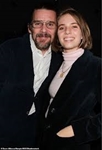
Maya Hawke scored her biggest role to date with the news on Friday that she'll be starring in the upcoming comedy film Revolver.
The 22-year-old actress will play the lead role in the film about a surprise meeting with The Beatles in Alaska in the mid-1960s, Variety reported.
Joining the Stranger Things star as her on-screen dad will be her real-life father Ethan Hawke, 49.
The northern city is thrown into chaos after a flight carrying The Beatles to Japan makes an unannounced stop in Anchorage, sending the residents into fits of Beatlemania.
Jane thinks her ticket to adulthood involves losing her virginity to George Harrison during the band's pit stop at a local hotel, but she learns that what she's really seeking is right in front of her.
Not much is known about Ethan's arc in the film, but he's more than qualified to play Jane's father.
Source: Brian Marks/dailymail.co.uk
details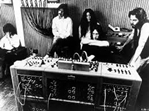
The Stones were bolder. The Who was louder. But the Beatles simply ruled, from their first single in ’62 until their breakup eight years later. The argument can still be made that they ruled.
Everyone knew them, or thought they did.
As Craig Brown’s “150 Glimpses of the Beatles” suggests, to understand them, you must push past the publicity, the myths, the lies. His doorstop of a book digs deep to try to uncover the truth.
It was July 6, 1957, when the Beatles began. John Lennon, surly and nearly 17, was performing at a school event with his band, the Quarrymen. Paul McCartney, just 15, watched nervously. “I wouldn’t look at him too hard, in case he hit me,” McCartney said later.
Afterward, McCartney worked up the nerve to introduce himself. He played a few songs, including “Be-Bop-a-Lula.”
“He was as good as me,” Lennon marveled. “It went through my head that I’d have to keep him in line if I let him join. But he was good, so he was worth having. He also looked like Elvis.”
Source: Jacqueline Cutler/nydailynews.com
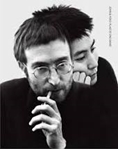
Listen to ‘Isolation’, the sparse fifth track on ‘Plastic Ono Band’ (John Lennon’s first post-Beatles record), a meditative piano ballad on which he laments the fact that “the world may not have many years”, and you may find it difficult to believe that the album turns 50 this year. Featuring both the brittle, paranoid ‘Working Class Hero’ and the unabashedly romantic ‘Love’, it’s a timeless collection that truly encompasses the complex singer-songwriter’s duality.
It would have been John Lennon’s 80th birthday earlier this month. To celebrate both this and the album’s anniversary, publisher Thames & Hudson has released John & Yoko / Plastic Ono Band, a lush coffee table book that gathers together interviews new and old, hand-written song lyrics and previously unseen photos – from Lennon’s childhood snaps to candid studio pics – that tell the story of this singular musician and magnificent record.
Source: Jordan Bassett/nme.com
details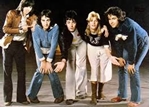
If you were a fan of Jamaican giants Toots Hibbert and Bob Marley, the idea of British pop stars recording reggae songs might have terrified you. Did the world need that ’74 Eric Clapton cover of “I Shot the Sheriff”? Clapton thought so. The former members of The Beatles also went there in the ’70s.
That wouldn’t have come as a complete surprise to fans of the Fab Four. After all, The Beatles took their first stab at Jamaican music way back on 1964’s “I Call Your Name.” On that track, you hear the band shift into a ska beat in the middle eight bars.
Island sounds crept into the band’s music again on The White Album (1968). On that record, McCartney developed “Ob-La-Di, Ob-La-Da” with a rocksteady beat. (While the recording reportedly bugged Lennon to no end, it wasn’t the groove that annoyed him.)
After the Beatles’ breakup, Toots & The Maytals and Marley & The Wailers broke internationally with their reggae sounds. And Lennon and McCartney took a stab at the music in their ’70s solo work. In both Lennon’s and McCartney’s cases, these dives into reggae predated that of Clapton.
Source: cheatshe details
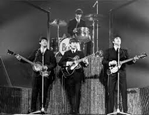
The Beatles and Fleetwood Mac are both classic rock bands, but you wouldn’t really associate one with the other. However, one of the Fab Four’s later songs was directly inspired by a Fleetwood Mac song. Here’s how Fleetwood Mac inspired The Beatles — and how John Lennon’s passing inspired a member of Fleetwood Mac.There are numerous books and articles about The Beatles’ influence on pop culture, however, The Beatles definitely drew inspiration from other artists. For example, Abbey Road is filled with references to other artists. Listen closely, and you’ll hear homages to everyone from Ludwig van Beethoven to Chuck Berry. In addition, one of the tracks from Abbey Road took influence from one of the Fab Four’s contemporaries, Fleetwood Mac.
Source: cheatsheet.com
details
John Lennon was married twice at different times of his life, though his marriage to Yoko Ono was best known. Before this, however, he was married to Cynthia Lennon, whom he met before he was famous. But what happened to Cynthia, after she and John broke up?
Cynthia Lennon first met John in 1957, when they were both attending Liverpool College of Art.
They began dating and in 1962 she became pregnant with Julian, who was subsequently born on April 8, 1963.
At this time, the band was only just making it big in the music business, but in the years which followed, The Beatles’ fame morphed into Beatlemania
Their relationship began to break down until John met avant-garde artist Yoko Ono and they began corresponding in 1966.
Source: Jenny Desborough/express.co.uk
details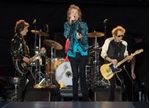
From classic American rockers to British artists to the estates of late legends, here's a look at some of the musicians who have objected to Donald Trump using their songs at campaign events.
JOHN FOGERTY, PHIL COLLINS, BRUCE SPRINGSTEEN
Some classic rockers say not only do they oppose Trump using their music, the choice of songs is ironic or downright wrong. John Fogerty, who last week sent the campaign a cease-and-desist letter over the use of “Fortunate Son” by his band Creedence Clearwater Revival, said he was baffled by the use of a song that could have been written to slam Trump. Phil Collins sent the campaign a demand to stop using “In the Air Tonight" after it was played at an Iowa rally this month. Many observers say it was an odd song to choose given that the air among the mostly mask-less people at the rally could have been spreading the coronavirus. And just as he had with Ronald Reagan in 1984, Bruce Springsteen objected in 2016 to Trump blasting “Born in the U.S.A." as a patriotic anthem, when it's actually a scathing indictment of the treatment of Vietnam vets.
Source: clickorlando.com
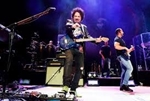
Grammy-Award winner Steve Lukather, best known as the lead guitarist for Toto, recently joined host Kenneth Womack to talk about the Beatles on "Everything Fab Four," a new podcast co-produced by me and Womack, a music scholar who also writes about pop music for Salon, and distributed by Salon.
Lukather, who has played on over 2,000 rock and pop tracks, talks about how he went from being "shitty at sports" and "bullied as a kid" to finding his soul in music when the Beatles hit "The Ed Sullivan Show" in 1964.
"Life went from black-and-white to color," says Lukather. "I was like, I gotta learn how to do that. I [joined] a band when I was nine. I mean, what are the odds of a little kid from West Hollywood seeing the Beatles on 'Ed Sullivan,' then playing on the 50th anniversary of that show?"
Nowadays, having been a member of Ringo Starr's All-Starr Band for years, he counts Ringo as one of his closest friends. "I cherish that relationship probably more than anything at this point," Lukather says. "Ringo's the coolest guy I've ever been friends with — and I have a lot of cool friends."
Source: salon.com
